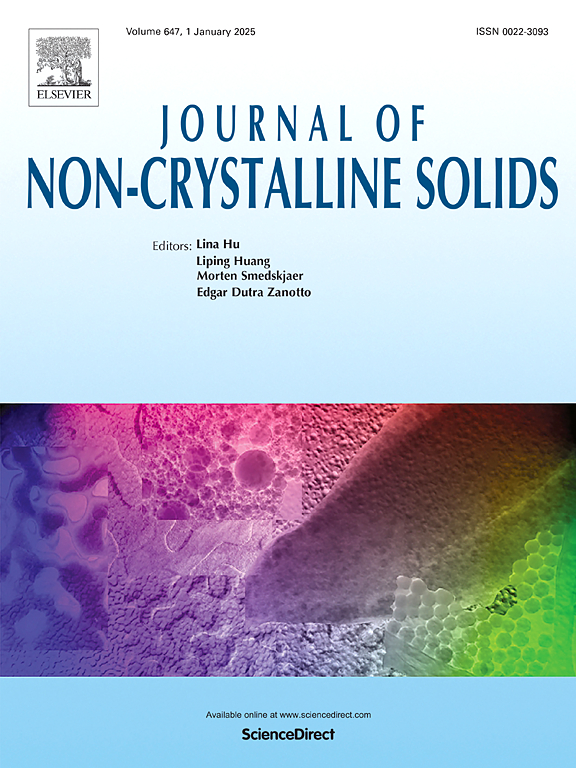钠钙硅玻璃在不同长度尺度上的压力诱导结构转变
IF 3.5
3区 材料科学
Q1 MATERIALS SCIENCE, CERAMICS
引用次数: 0
摘要
尽管钠石灰二氧化硅(SLS)玻璃被广泛使用,但其近程有序(SRO)结构,特别是中程有序(MRO)结构仍未完全了解。本文研究了压力淬火对SLS玻璃结构的影响。我们的分析是基于通过经典分子动力学模拟建立的原子构型。我们通过分析配位数、Qn形态和键角分布来表征SRO,同时我们使用持续同源性和经典环分析来识别MRO特征,以捕获化学和非化学键环。我们还通过分析持续同源性所识别的空洞来分析MRO特征。我们发现致密化导致Si和O配位数的增加和键角的改变。在MRO长度尺度下,第一个尖锐衍射峰的位置随着压力的增大而向更高的Q值移动,其强度随着压力的增大而减小。此外,我们在致密玻璃中发现了较小的空洞和环以及四面体和五面体对称性。总的来说,我们的工作为SLS玻璃的致密化机制提供了见解。本文章由计算机程序翻译,如有差异,请以英文原文为准。
Pressure-induced structural transformations at different length scales in soda-lime silica glasses
Despite the widespread use of soda-lime silica (SLS) glasses, their short-range order (SRO) and especially medium-range order (MRO) structures are still not fully understood. In this work, we study the effect of pressure quenching on the structure of SLS glasses. Our analyses are based on atomic configurations established through classical molecular dynamics simulations. We characterize the SRO through analysis of coordination numbers, Qn speciation, and bond angle distributions, while we identify the MRO signatures using persistent homology and classical ring analysis to capture both chemically and non-chemically bonded rings. We also analyze the MRO signatures by analyzing the voids identified by persistent homology. We find that the densification results in an increase in both Si and O coordination number and altering bond angles. Considering MRO length scales, the position of the first sharp diffraction peak shifts to higher Q values while its intensity decreases with pressure. Additionally, we identify smaller voids and loops as well as tetrahedral and pentahedral symmetries in the densified glasses. Overall, our work offers insights into the densification mechanism of SLS glasses.
求助全文
通过发布文献求助,成功后即可免费获取论文全文。
去求助
来源期刊

Journal of Non-crystalline Solids
工程技术-材料科学:硅酸盐
CiteScore
6.50
自引率
11.40%
发文量
576
审稿时长
35 days
期刊介绍:
The Journal of Non-Crystalline Solids publishes review articles, research papers, and Letters to the Editor on amorphous and glassy materials, including inorganic, organic, polymeric, hybrid and metallic systems. Papers on partially glassy materials, such as glass-ceramics and glass-matrix composites, and papers involving the liquid state are also included in so far as the properties of the liquid are relevant for the formation of the solid.
In all cases the papers must demonstrate both novelty and importance to the field, by way of significant advances in understanding or application of non-crystalline solids; in the case of Letters, a compelling case must also be made for expedited handling.
 求助内容:
求助内容: 应助结果提醒方式:
应助结果提醒方式:


